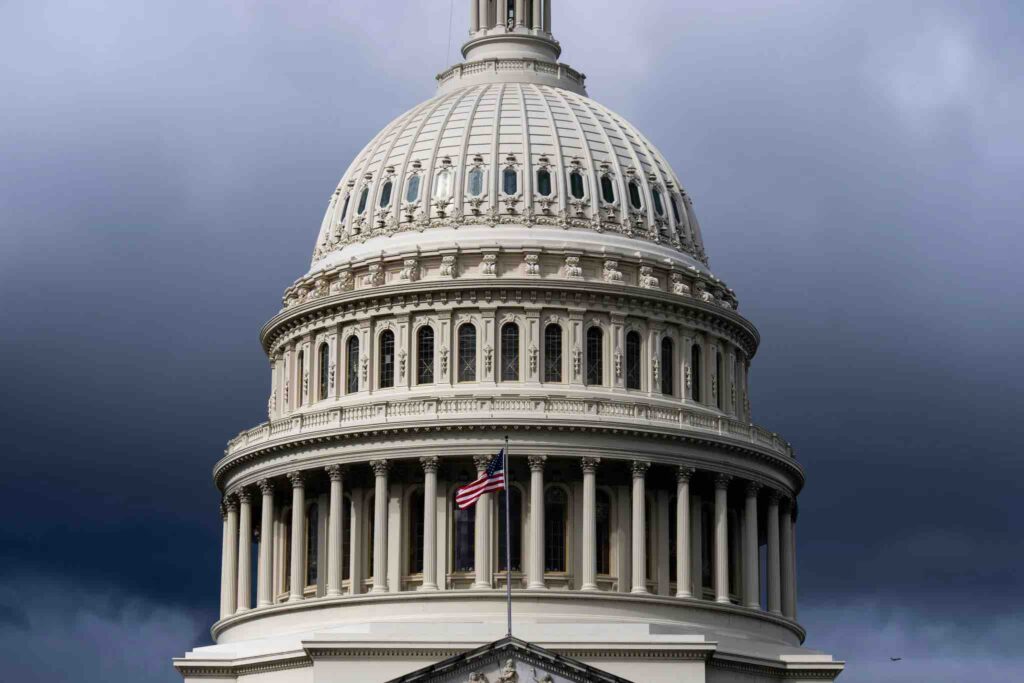What Happens to your EBT, Medicaid and other benefits if the Federal Government Shuts Down?
|
|

What could cause the U.S. government to shut down? There are 12 appropriations bills, each covering various federal departments and agencies, that are supposed to be passed by Congress and signed by the president by October 1st every year. This almost never happens, however. In fact, Congress has only passed the appropriations bills on time four times since the 1970s.
What usually happens instead, is that temporary spending bills are established, to prolong the deadline, while legislators work out a compromise to sign off on the longer term appropriations. If these temporary spending bills are not established, however, the unfunded portions of the government will shutdown– at least in part– and this includes many benefit programs.
Here are some things to know about the potential impact of a federal shutdown:
1. The whole government doesn’t shut down, only some parts of it do.
If it happens, some government functions will stop completely and some in part, while others would NOT be immediately affected.
2. Mandatory Spending Programs like Social Security, Medicare, and Veterans Benefits are NOT effected.
Programs that have permanent funding don’t need Congress to act periodically to keep them running. As such, Social Security and SSI payments will continue during a government shutdown. Likewise, payments for Medicare services and Veteran medical care and pension benefits will also continue. This is because these have funding sources separate from the appropriations that are due on October 1st.
There could be lapses in some other aspects of these services, though. For instance, the federal government might not be able to issue replacement Medicare cards, or accept new applications for Social Security or new applications for Medicare benefits. These are auxiliary services, not payments to beneficiaries, and require significant staffing which is paid for by the appropriations. During a shutdown, staffing in some auxiliary services is temporarily cut (furloughed) so that other auxiliary services, deemed more important, can continue to operate during the shutdown. So for instance, Veterans would still be provided medical care and pension benefits, but some services within the Department of Veterans Affairs, such as career counseling for veterans, may not be provided.
3. Programs that have been funded in advance are unaffected by a shutdown.
Programs that have been funded in advance by Congress are unaffected by a shutdown. For example, the Indian Health Service is already funded through September 2026. Another example is Medicaid, which to funded through the first quarter of fiscal year 2026, which is December 31st, 2025.
4. What about SNAP and WIC EBT payments?
The Supplemental Nutrition Assistance Program (SNAP) is not expected to be immediately disrupted. Access to the Special Supplemental Nutrition Program for Women, Infants, and Children, commonly known as WIC, is also not expected to be immediately disrupted. This is because both programs have reserves that should last at least through October.
Payments could be affected later in the year depending on how long a shutdown lasts and how much contingency funding remains. WIC is more vulnerable due to it having a smaller emergency reserve. Staffing cuts are typically made to save money during shutdowns, to stretch the length of time the reserves will last, and thereby enable SNAP and WIC payments to continue longer. The cuts in staffing however mean that new applicants for these services after October 1st may experience delays or be turned away due to the lack of staffing.
5. What about Enrollment in Medicare and Affordable Care Act plans?
Benefits would continue under programs like Medicare, Medicaid, and the Affordable Care Act. Doctors and hospitals can continue to submit bills and get paid. But again, funding for staffing would be more limited, which means staff numbers would likely be cut. These cuts would allow other staff to keep working for more months than possible without the cuts, to maintain core services longer. As stated earlier, this means initial Medicare enrollment could be temporarily stopped, for the benefit of Medicare participants already enrolled. As for Affordable Care Act plans which will open for enrollment November 1st, the current contingency documents state that healthcare.gov, “will continue Federal Exchange activities, such as eligibility verification”.
6. The White House decides which Unfunded Programs stay open and how long.
If a program is not funded, the White House has some discretion about continuing the operations of the program. The general rule is that two types of activities may continue absent annual spending authority from Congress. One is activities needed “for safety of human life or the protection of property.” Operational contingency plans for each unfunded service are published by the individual websites of each federal department. These state in advance what services will be temporarily cut during a shutdown, and the departments that will have temporary staffing cuts.
7. More programs could be affected if the shutdown is prolonged.
The government has never been shut down long enough to know what would happen beyond the first quarter of the next fiscal year. The first quarter of the next federal fiscal year (FY2026) ends on December 31, 2025.
There is a helpful Q&A webpage provided by the Committee for Responsible Federal Budget that answers many questions one may have about government shutdowns. They also provide a .pdf available for download that can be shared to address additional questions one may have about a potential shutdown.
For those wishing to do a deeper dive into the contingency plans published by various departmental services, the Contingency Plan for the Centers for Medicare and Medicaid Services is available online. So is the Department of Veteran Affairs Contingency Plan, and the Contingency Plan for Social Security.
A government shutdown does not affect United Resource Connection, so long as we have people like you that donate to support our newsfeed and resource library operations. You can continue to find information about local changes in application protocols and service availability, as well as public health announcements and information about commercially available discount programs for low income individuals and families, by subscribing to our newsfeed or visiting our Social Service “Utilization Library” page.



